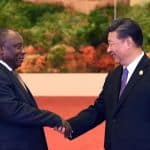The Distributed Economy: Four Ways Blockchain Can Transform MSMEs in Emerging Markets
Together, micro, small and medium enterprises (MSMEs) are the largest employers in many developing countries, yet their viability suffers from limited access to savings, insurance, credit equity and payments services. According to the International Finance Corporation’s Enterprise Finance Gap Database, there are 400 million MSMEs in developing countries, of which 40 percent are unserved. Only 15 percent of those MSMEs have access to credit and 25 percent of them have found access to finance to be a major constraint.
Brick-and-mortar banks are not able to serve many of these enterprises sustainably due to risk, compliance challenges and an expensive operational model. Prevalence of government bureaucracy and corruption also stifles the growth potential of MSMEs, and sometimes forces them to operate in black or gray markets to survive as businesses. Although the internet did have a significant effect on the growth of entrepreneurship in the ’90s and 2000s, the banking industry is now dominated by a few large multibillion-dollar companies which have not succeeded in creating tools that micro-entrepreneurs can leverage to build their businesses.
The opportunity for blockchain to solve these challenges is tremendous. This new peer-to-peer platform for identity, trust and financial transactions will help us reconfigure the stronghold notion of large corporations and redistribute prosperity among those with good ideas and perseverance.
What is the blockchain? It’s a new type of data application or ledger, storing immutable data, which can be directly shared without requiring a central administrator. This contrasts with traditional databases, which have one single administrator that owns and controls the data. The new protocol or design of the blockchain enables transactions directly between two or more parties, authenticated by consensus of multiple computers or “nodes.” Blockchain transactions are based on cryptography, which makes them inherently more secure than any traditional database or system today.
Due to the lower cost and distributed structure, blockchain is more sustainable for governments, banks, organizations and small business owners to use over the long term. Distributed ledger technologies are less costly than traditional databases because the distributed system regulates itself and automates much of the overhead generally required for verification of various transactions. For example, the reduction in risk inherent in blockchain systems would allow financial institutions to settle transactions faster and with less scrutiny.
In the next five years, we may see the following uses of blockchain to further MSME growth:
- New financing business models will emerge based on trust networks. If we begin to transact based on the verification of assets and people on the blockchain, businesses can obtain financing with terms that meet their needs, rather than based on the supplier’s terms, and from new sources as well.
- Use of smart contracts will give micro and small businesses quicker and more efficient access to finance and raw materials. Smart contracts are tiny computer programs that can live on the blockchain. These programs get stored, verified and executed by the same blockchain network. This allows for more advanced functions to take place on the blockchain, such as verifying that an individual meets certain criteria or that multiple parties have complied with an agreement or contract.
- Recording, tracking and verifying trades of virtually any asset will be more secure and less costly, thus it will open new forms of financing for MSMEs that were not possible before.
- Movable property registries can live on the blockchain, against which finance can be accessed. Many countries lack comprehensive collateral registries, and collateral is often used to secure working capital and term loans. If the blockchain were to have a registry of things like accounts receivable, inventory, machinery, equipment and/or real estate, it could be utilized by MSMEs for financing growth.
The distributed economy will not happen overnight. It will require a significant increase in internet access, standards across the nascent industry, more efficient uses of energy, and most importantly, acceptance. It will require governments to embrace transparency and decentralization, and for banks to rethink their role in society. In theory, blockchain will reduce the need for existing intermediary institutions – government and banks being some of those – but in practice, the largest intermediaries are beginning to explore their use of blockchain within this future, distributed economic paradigm.
At BanQu, we are seizing this opportunity by starting with the basic building blocks of our global, digital economy – people, assets and organizations. We are examining how to create systems whereby micro and small businesses can monetize their natural networks, skill sets and assets to lift their families and communities out of poverty. We are considering how MSMEs will fit into the future state of cross-border trade.
Shailee Adinolfi is vice president, account management and marketing, at BanQu.
Photo by Christian Ditaputratama via Flickr
- Categories
- Technology



